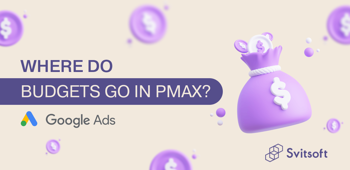Difference Between Targeted and Contextual Advertising
In this article, we will consider each type of advertising. We will compare them with each other and outline the main differences. We will see which type of advertising and in which case will work better, and when they should be combined.
Targeted advertising
Let's define what a target is and what it is like.
Target is an advertising mechanism, the essence of which is to show ads to a possible target audience by such parameters as gender, age, interests, education, income, and family size. The manager independently determines these parameters and sets the settings or takes an approximate portrait of the target audience from the client.
The main difference from contextual advertising is the lack of relevance to the query. That is, the audience is less warmed up and not very prone to targeted action. The work is carried out on coverage and brand awareness. Targeted advertising, most often, is called ads account on Facebook / Instagram.
Let's look at the example of a children's summer camp.
Objective: To select targeting for advertising on social networks Facebook / Instagram.
A portrait of a possible target audience comes to mind almost immediately. Let's go through the main parameters:
✔ Geographic targeting. It allows you to show ads from a specific place on the map with a point (radius from 1 km) to a selection of specific districts, cities, regions, countries, etc.
In our case, it is Kyiv and Kyiv region, as the camp is physically located in the Kyiv region, and we are interested in the people living around.

✔ Target by interests. The choice of the parameter is made according to the list of interests, which was formed with the help of various signals (who watches what online, what buys, what groups are subscribed to, etc.). Based on this data obtained by the tool, the algorithm determines which audience to assign a particular user to. In our example, we look at the interests that are closest to children, parenting, and children's camps.

✔ Socio-demographic targeting. It allows you to personalize advertising by such parameters as gender/age/income/position/children. We are interested in the solvent age and children of different ages, from which it is already possible to send a child to the camp.


✔ Target by device. Display ads on specific devices: PC, Mobile, Tablet, TV, etc. You can also choose the type of device and specify their specific models. It is possible to select the version of the operating system, browser, etc.
In our case, no breakdown is needed since it is possible to find out the detailed information and purchase a voucher from both — a phone and a PC. The type of device is also not essential to us. Therefore, we select ‘All mobile devices’ and PC.

✔ Target by time. You can specify at what specific time the ad will be shown and on what day of the week.
Here we start from the opening hours of the sales department.
Opening hours:
Monday to Friday - 8:00 a.m. to 6:00 p.m.
Saturday and Sunday - 10:00 a.m. to 6:00 p.m.
It makes no sense for us to advertise after hours, as the facility will be closed, and the manager will not be able to answer the client's questions or issue a voucher.

What results can be achieved using targeted advertising?
Targeted advertising aims to create an advertising message for the target audience and increase its effectiveness.
As we said earlier, it is necessary to simultaneously use different types of targeting to clearly identify your target audience (gender, GEO, interests, behavior, etc.).
Thus, targeted advertising allows you to achieve several goals at once:
- to bring together the entire target audience that uses a particular social network;
- quickly and effectively tell about the product/service;
- encourage users to go to the site for more detailed information about the product;
- motivate users to perform the target action: purchase, application, subscription, registration, etc.
In the example of a children's summer camp, knowing your target audience, emphasizing the ad, and using different options for targeting by interests and behavior, you can get at least 158 leads.
Creativity with the right message and meaningful text is the key to success, and the user will not only pay attention but also click on the link / leave a request.
Now consider the benefits of contextual advertising.
Contextual advertising is a type of Internet promotion in which ads about a product/service are shown, taking into account the user's request in a search engine or relevant content. In other words, the match of the request to the advertisement is maximum, and the audience is already ready to buy, as it is already at the stage of analyzing options and making a final choice.
Google Ads is the most commonly used search engine for contextual advertising.
Context is commonly referred to as:
✔ Search advertising. These text ads are shown to the user in the search results at his request. In other words, it's when we Google something. Technically, the display is based on a list of keywords that are relevant to our business. Consider the example of a toy store:

The user enters a request in the search field, and the system provides the most relevant answer.
Before we go any further, let's immediately consider the trading type of campaigns for the same toys:

✔ Advertising of trading campaigns. To create it, you need a data feed (document), which will contain all the information about all the products that are presented on the site. The display is based on the query's relevance to the feed's keywords (description and name).
✔ Google Display Network (GDN). It is advertising on sites that allow you to place ads on their own and in applications and other partner resources of search engines. Graphic banners and videos are used for it. GDN can respond to users' search queries and work on the principle of targeted advertising. Its goal is to increase brand awareness, arouse the interest of potential customers, and increase sales.
GDN can be equated to targeted advertising as, technically, the placement sites and audiences are selected, like on Facebook / Instagram. However, search engine algorithms analyze user behavior and interests and then display the ad which is most likely to interest you.
It should be noted that GDN also includes remarketing, which shows banners to those who have already visited our site, reminding them of it.

✔ Mobile app advertising is another type of contextual advertising that allows you to run mobile application advertising in Google Play / AppStore. To display it, you must have a mobile app. The tool's purpose is to increase the number of app installs, engagement, and registrations before its launch (Android only). In addition, you can increase the number of sales or calls if your app is a store.
✔ Local campaign is an opportunity to inform the user about the time and possible dates of visiting an offline point. With this tool, you can place advertising messages on such platforms as Search, Maps, and YouTube, as well as on the Display Network. When creating a local campaign, you need to specify the addresses of the stores you want to advertise.
The machine-learning algorithm based on the received data about users can identify people who are inclined to visit points such as shops, service stations, sales departments, cafes, car showrooms, etc. The main task of the local campaign is to increase offline sales.
✔ Video campaign is a video that is shown on the Media Network and YouTube. Today there are such types of advertising as:
- In-Stream ads with the option to skip
- TrueView for Action
- TrueView for Reach
- TrueView for Shopping
- TrueView Ad Sequencing
- In-Stream ads without the option to skip
- Bumper Ads
- Video Discovery
- Masthead banners
- Audio advertising on YouTube - since September 2020
- We will not dwell on each of the types in detail.
- The operation and targeting settings principle is the same as in the Google Display Network.
In short:
Targeted advertising is not able to respond to user requests, which affects the level of interest in advertising. At the same time, having an idea about your target audience, you can target it as accurately as possible, thereby inducing the user to buy.
On the contrary, contextual advertising works with the relevance of the request to the advertising message.
The more advertising sources there are, the better and faster the result will be. The main thing is understanding which product/service is suitable for a particular tool to get the most out of it.
We wish you success in your choice and more leads!
Similar articles
All articles








